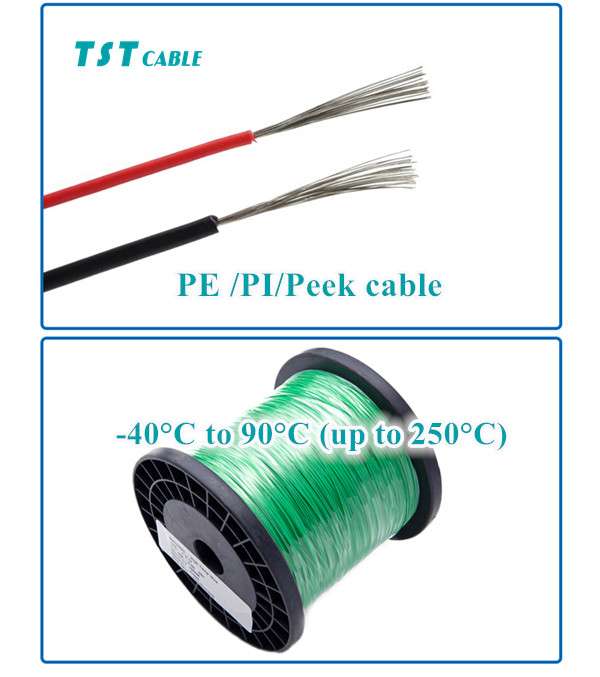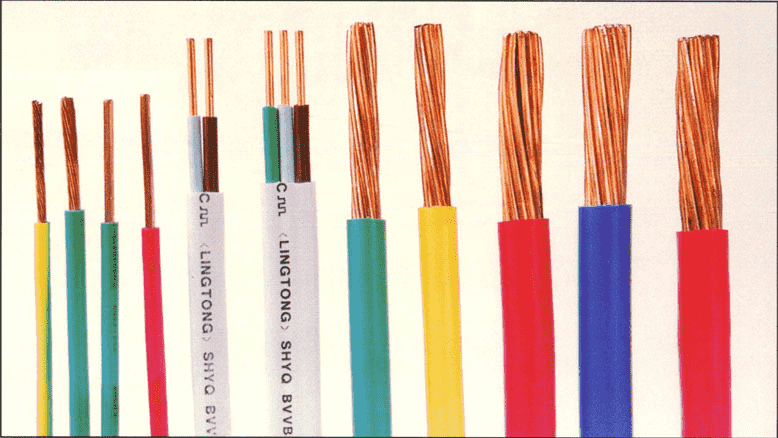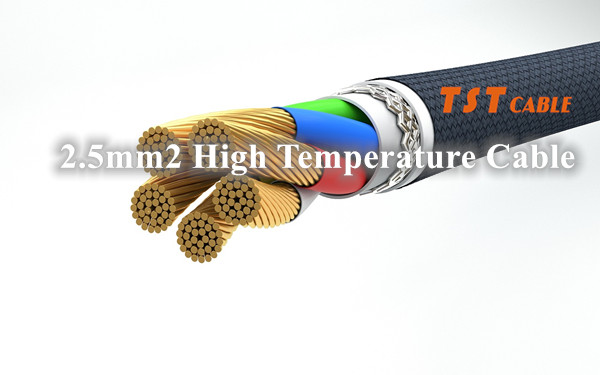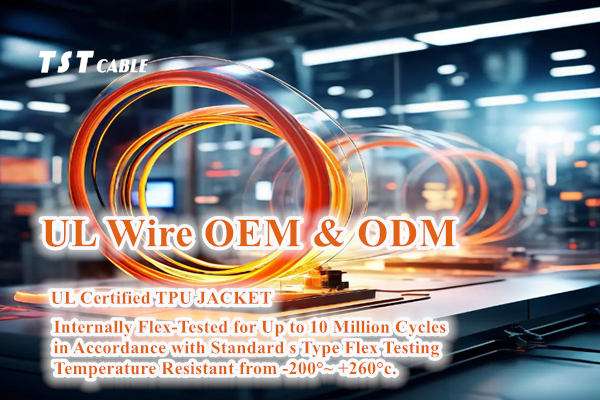
PEEK (polyetheretherketone) cables have shone brightly in the rail transit field precisely because they accurately meet the extreme requirements of modern rail vehicles such as high-speed rail and subways for safety, reliability, lightweighting, and environmental protection. TST CABLE Nico will explain in detail how PEEK cables systematically meet the high requirements of rail transit:
I. Extreme Safety: Fire-retardant + Low Smoke and Non-toxic = Passenger “Lifeline”
Rail transit carriages are enclosed spaces. Once a fire breaks out, traditional PVC cables will release large amounts of dense smoke and hydrogen chloride toxic gas, easily causing mass casualties.
PEEK cables, on the other hand:
Achieve a UL94 V-0 flame retardant rating, with almost no flame spread during combustion;
Completely halogen-free, producing no acidic or toxic gases during combustion;
Extremely low smoke emission, with light transmittance far exceeding the EN 45545-2 railway fire protection standard requirements;
Meet the most stringent EU fire protection standard EN 45545-2 HL3 (highest hazard level).
✅ Effects: High visibility during fires, no corrosive gases, saving precious time for passenger evacuation and rescue.
II. Superior Reliability: High Temperature Resistance + Vibration Resistance + Long Lifespan
Rail vehicle operating environments are extremely harsh:
Temperatures near traction motors often exceed 150℃;
Continuous high-frequency vibration in the bogie area;
Long-term exposure to oil, moisture, and condensation.
PEEK Cable Solutions:
Long-term operating temperature up to 250℃, short-term resistance to 300℃, easily handling the high-temperature areas of motors and braking systems;
High rigidity and excellent creep resistance, less prone to fatigue cracking under continuous vibration;
Outstanding resistance to sliding wear and fretting wear, suitable for frequently bent connection parts (such as doors and pantographs);
Lifespan 2-3 times that of ordinary cables, significantly reducing maintenance costs.
III. Extreme Lightweight Design: Weight Reduction Equals Energy Saving
Rail transit is vigorously promoting “green and low-carbon” practices, and every 1kg reduction in weight can save hundreds of kilowatt-hours of electricity over the train’s entire lifespan.
PEEK material has a density of only 1.3 g/cm³, approximately 1/7 that of copper and 1/5 that of steel.
→ Under the same specifications, PEEK insulated cables are 30%~50% lighter than traditional metal-sheathed or PVC cables.
→ If an 8-car high-speed train were to fully adopt PEEK cable assemblies, the weight of the main cabling system could be reduced by over 200 kg, significantly reducing energy consumption and carbon emissions.
IV. Superior Electrical Performance: Stable and Interference-Free Signals Modern trains heavily rely on electronic systems (signal control, automatic driving, passenger information systems), requiring extremely high electromagnetic compatibility (EMC) standards.
PEEK Advantages: Low and stable dielectric constant, resulting in low high-frequency signal transmission loss; High volume resistivity (>10¹⁶ Ω·cm), providing excellent insulation performance; Can be combined with silver-plated copper conductors and shielding layers to create high-shielded PEEK composite cables, effectively suppressing electromagnetic interference.
✅ Applied to onboard communication, sensor networks, and traction control systems, ensuring “zero errors and zero interruptions.”
V. Environmental Compliance: Green throughout the entire life cycle. Halogen-free and heavy metal-free, complying with RoHS, REACH and other environmental directives; Combustion products are only CO₂ and H₂O, without polluting the tunnel or station environment; Recyclable (some manufacturers have developed closed-loop recycling processes).
VI. Practical Application Cases of TST CABLE PEek Cables
China High-Speed Railway: The new generation of Fuxing bullet trains piloted PEEK insulated high-temperature cables in the traction converter and bogie sensor lines, resulting in a 40% reduction in failure rate.
European Metro: The German Metro platform uses PEEK cables for the braking feedback system, achieving EN 45545-2 HL3 certification.
Maglev Train: Due to the strong electromagnetic field environment, the Shanghai Maglev Line uses PEEK sheathed shielded cables for all critical control circuits to ensure stable operation.
PEEK Cables = The “Four Highs” Solution for Rail Transit
High Requirements: PEEK Cable Solutions
High Safety: Halogen-free flame retardant, low smoke and low toxicity, meets EN 45545-2 HL3 standards
High Reliability: Withstands 250℃ high temperature, vibration resistant, long lifespan
High Energy Efficiency: Lightweight design reduces traction energy consumption
High Intelligence: Excellent electrical performance supports autonomous driving and the Internet of Things
With the decreasing cost of domestically produced PEEK materials (such as the mass production of TST CABLE), PEEK cables are moving from “high-end optional” to “mainstream standard,” becoming a core component of next-generation intelligent, green, and safe rail transit.
Also available in:
English





